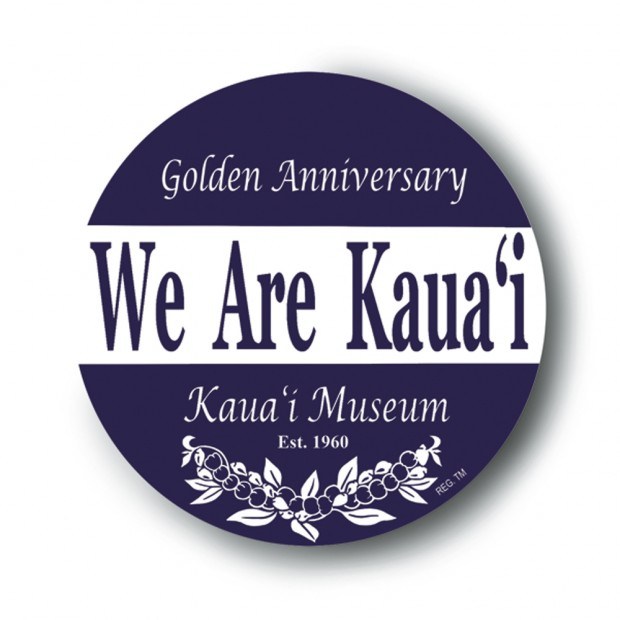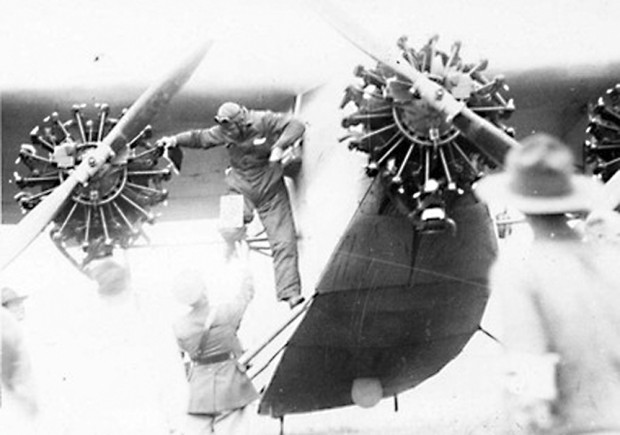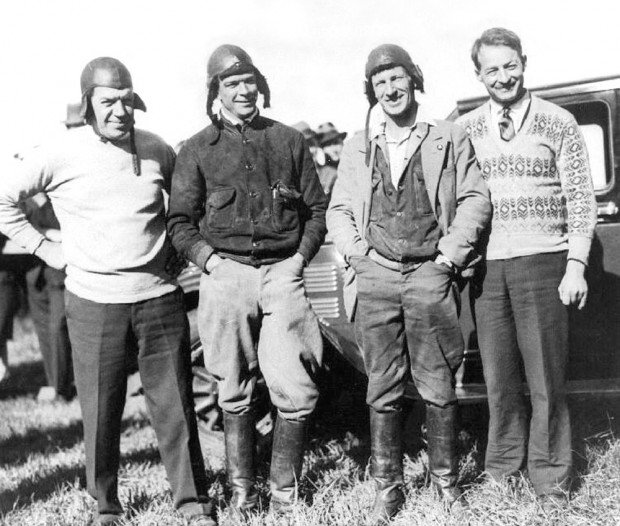LIHU‘E — Few remember that Kaua‘i played an important role in the first trans-Pacific flight from the U.S. Mainland to Australia in 1928. The difficulty for early long distance flights concerned carrying enough fuel in the relatively small planes of
LIHU‘E — Few remember that Kaua‘i played an important role in
the first trans-Pacific flight from the U.S. Mainland to Australia
in 1928. The difficulty for early long distance flights concerned
carrying enough fuel in the relatively small planes of the day.
Just getting off the ground was a major feat. Often it took several
tries and jettisoning of life rafts and even fuel. At the time, the
Wheeler Army Air Field was too short for the Southern Cross, to
lift off fully loaded. Kekaha Sugar prepared a long runway at
Barking Sands, a large flat area on Kauai’s west end.
Editor’s note: On Dec. 3, the Kaua‘i Museum celebrates its 50th anniversary. Museum leaders have chosen 50 stories from exhibits, collections and the archives of the museum to share with the public. One story will run daily through Dec. 3.
LIHU‘E — Few remember that Kaua‘i played an important role in the first trans-Pacific flight from the U.S. Mainland to Australia in 1928. The difficulty for early long distance flights concerned carrying enough fuel in the relatively small planes of the day. Just getting off the ground was a major feat. Often it took several tries and jettisoning of life rafts and even fuel. At the time, the Wheeler Army Air Field was too short for the Southern Cross, to lift off fully loaded. Kekaha Sugar prepared a long runway at Barking Sands, a large flat area on Kauai’s west end.
The Southern Cross left from Oakland Airport May 31, 1928 with an Australian pilot and copilot: Charles Kingsford-Smith and Charles P.T. Olm; as well as Americans navigator Harry W. Lyons and radio man James W. Warner. The plane was a Dutch-built Fokker trimotor monoplane with three new Wright Whirlwind J-5 engines. It had belonged to arctic explorer Hubert Wilkins and plans had been in place for a year prior to the flight. The plan was to land at Wheeler Field on O’ahu for repairs and then on to Barking Sands for final staging and fueling for the flight to Fiji and ending in Australia. The Southern Cross left finally Oakland on its second try carrying 1,350 gallons of gasoline.
This first leg went well, the Fokker flying between 70 to 90 mph and reached Wheeler in under 28 hours. The Southern Cross was escorted by Army planes on its approach from Diamond Head. The landing was witnessed by thousands of people including Governor Farrington and other dignitaries. While the crew celebrated and rested up at the Royal Hawaiian Hotel, a repair crew went to work on the plane in preparation for the rest of the flight.
At 4:30 p.m., June 2nd, the Southern Cross left Wheeler for Barking Sands. Accompanying it was the Aloha with Army flyer Captain Lowell H. Smith at the controls. Both planes landed on Kaua‘i at 5:57 p.m. and Army mechanics with plantation assistance wasted no time in beginning the arduous task of tuning the plane for its 3,180 mile flight leg to Suva, Fiji the next morning. The Aloha gave sightseeing tours so its time on Kaua‘i was documented.
Kingsford-Smith and the crew spent the night as a guest of Kekaha Sugar’s Lindsay Faye while relief pilot Olm apparently had friends on the island and was whisked off to join them. The crew rose at 3 am on June 3, and drove 1.4 miles to Barking Sands. After a consultation the previous evening, it was decided that they take on 1,300 gallons of gasoline and steer for a point 100 miles south on the course from O‘ahu to Suva. They took off from a run of 3,400 feet. Six minutes late their air speed was 99 miles an hour.
Thirty-four hours later, the Southern Cross landed in Suva after fighting heavy winds, rain and turbulence. It was the longest flight ever made over continuous seas and another perfect flight. On June 9, the Southern Cross took off for the last leg of 1,762 miles to Brisbane. All went well up until the last two hours when the plane hit severe storms. 140 miles off course, it picked up an aerial escort and landed without further incident. The Southern Cross and her crew covered 7,230 miles in 83 hours and 72 minutes.




